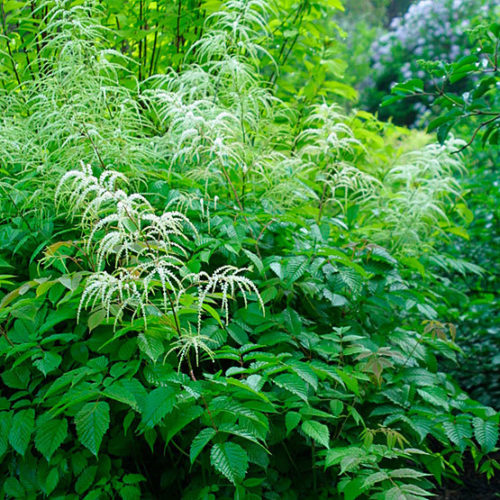The Legacy and Beauty of Goat’s Beard
Goat's Beard Plant has engaged herbal practitioners as well as landscapers and those interested in wildlife. The combination of its tall feathery plumes and lush green foliage ensures this plant stands out wherever it grows naturally or in cultivated gardens. Its striking appearance combined with its adaptable nature has made it valuable for use in traditional medicine as well as modern landscape design.
Goat's Beard Plant's Early Discoveries
The first European settlers who came across this plant in North America realized its medicinal properties immediately. Indigenous peoples traditionally prepared herbal remedies using their roots and leaves to treat digestive problems and respiratory disorders. Early healers produced tea from boiled roots, which people believed could relieve stomach problems and sore throats while enhancing overall health.

The settlers started integrating this natural treatment into their healing practices as they searched for remedies from nature. During the 18th and 19th centuries doctors tested its extracts to treat fever symptoms along with inflammation and promote wound recovery. Early documentation described the substance as a gentle health tonic for women which helped regulate hormones and quiet menstrual pain. Despite its reduced presence in traditional medicine herbalists today recognize its mild but powerful attributes.
A Showstopper in the Landscape
There exist only a handful of plants that establish such dominant visual presence in shaded or moist environments. This plant reaches impressive heights as it flourishes at woodland edges and moist meadows next to streams where its feathery white blooms dance in the breeze. The plant's vivid flower clusters transform gardens into softer, more textured naturalized spaces as summer unfolds.
Gardeners appreciate this plant because it successfully occupies areas where most other perennials fail to grow. This plant thrives in dappled shade which makes it ideal for woodland gardens where it grows well with ferns and hostas. Mass planting of this plant creates a visually striking effect similar to ornamental grasses or astilbe. The plant looks delicate yet proves to be a resilient perennial which requires little upkeep after it becomes established.
Goat's Beard Plant's Beauty
Goat's Beard Plant exhibits deeply cut dark green leaves that stay visually appealing during the entire growing season. The fern-like leaves form a dense bushy base which supports the plant's elegant flowering spikes. From late spring through early summer these beautiful plumes emerge from the foliage to reveal creamy-white clusters that look like soft tufts of silk.
The plant displays an airy cloud-like appearance because each flower contains delicate star formations spread across airy panicles. Its ornamental appeal comes from the striking contrast between delicate flowers and rich green leaves which makes it beloved by landscape lovers who value organic beauty. During autumn months the leaves transform into golden hues which create additional seasonal visual interest.
A Haven for Rare and Beneficial Wildlife
This plant provides essential support for multiple pollinator species and beneficial insect populations. Rare species find habitats in shaded woodlands as they gather around the soft plume-like flowers of this plant. Specialized bees, like mining bees, stand out as the main visitors because they look for their pollen. The survival of diverse ecosystems depends significantly on the work of these underappreciated pollinators.
Butterflies searching for nectar-rich sources in shaded environments find themselves attracted to these flowers beyond their appeal to bees. Native butterflies usually inhabit sunlit meadows yet some species like the Northern Pearly Eye choose environments with dappled light where this plant grows. These delicate creatures depend on the combined nutritional benefits of both pollen and nectar for essential sustenance.
Goat's Beard Plant forms a fascinating interaction with nocturnal moth species. This plant releases an evening scent that attracts flying insects which enables it to take part in nighttime pollination processes. Native moth species that rely on these plants for survival face population decline because of habitat destruction.
Birds, too, find value in its presence. As the flowers diminish they give way to small seed heads which become a late-season food supply for finches and seed-eating birds. The plant's dense foliage provides shelter for small woodland creatures and establishes a microhabitat that sustains biodiversity across shaded gardens and forests.
Goat's Beard Plant's A Plant of Timeless Elegance
Its rich traditional medicinal background combined with its undeniable landscape design appeal and support for rare wildlife makes this plant a timeless treasure. The plant connects historical lore to modern times by providing both visual charm and environmental gains.
Goat's Beard Plant serves as a resilient garden addition that creates a stunning visual impact by thriving in natural environments. The combination of its feathery flowers and complex leaves along with its subtle charm makes it essential for gardens that are shaded as well as woodland perimeters and areas that maintain high moisture levels. This remarkable perennial earns admiration for its medicinal history while its ornamental beauty and ability to attract unique wildlife create a lasting impression.